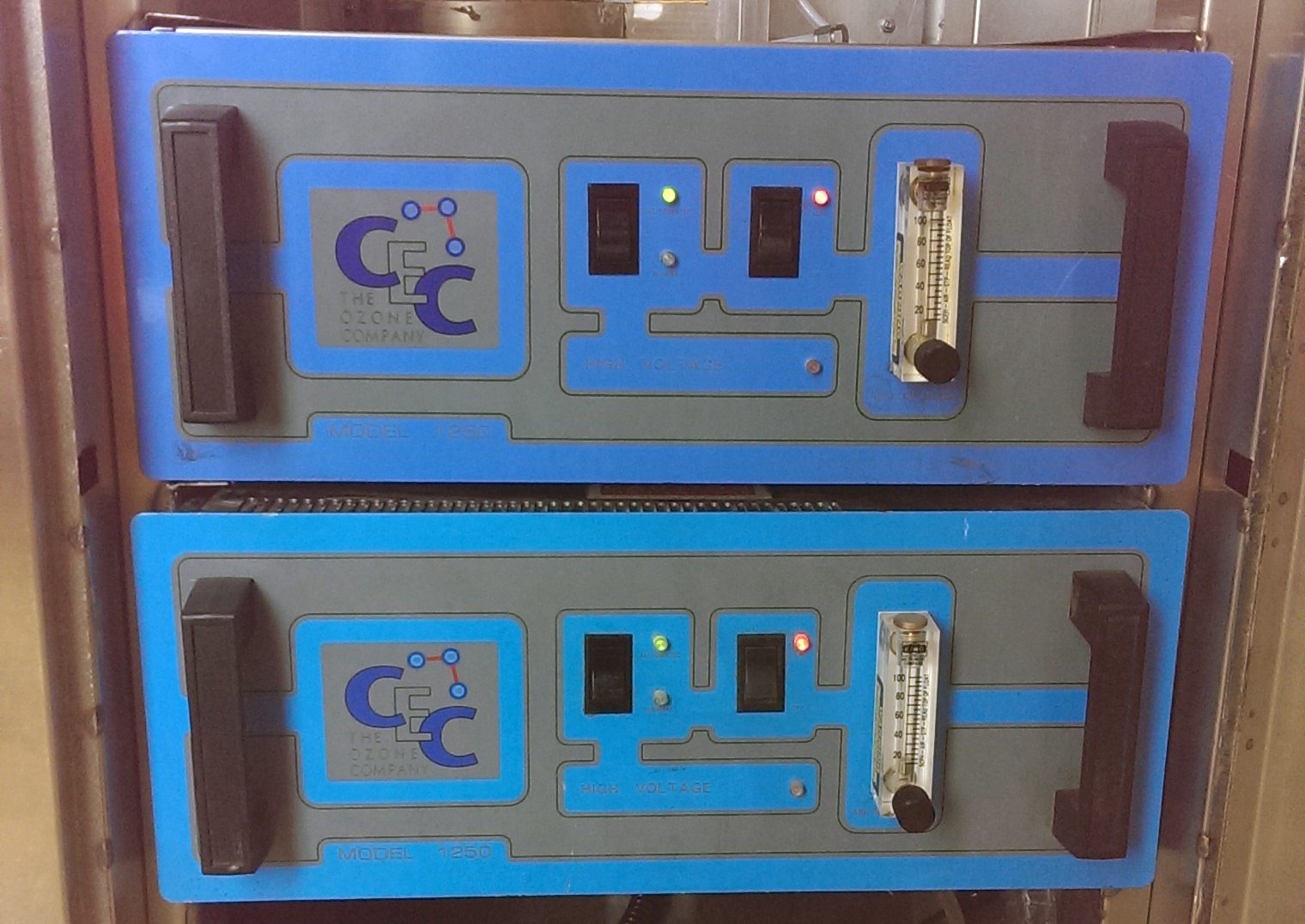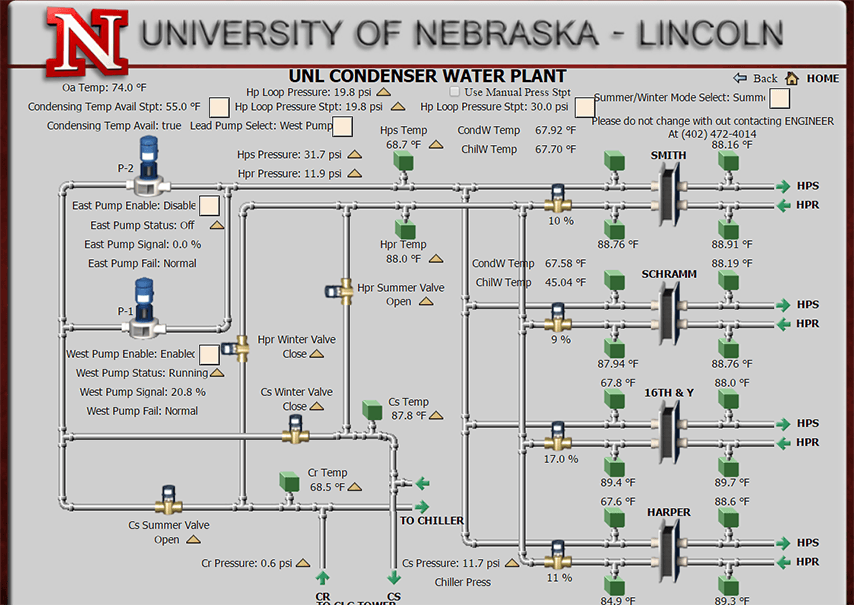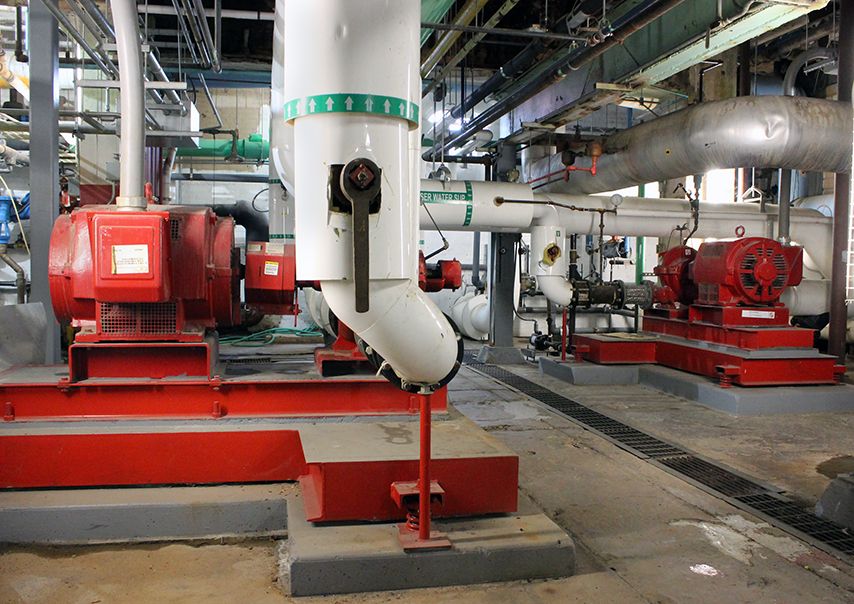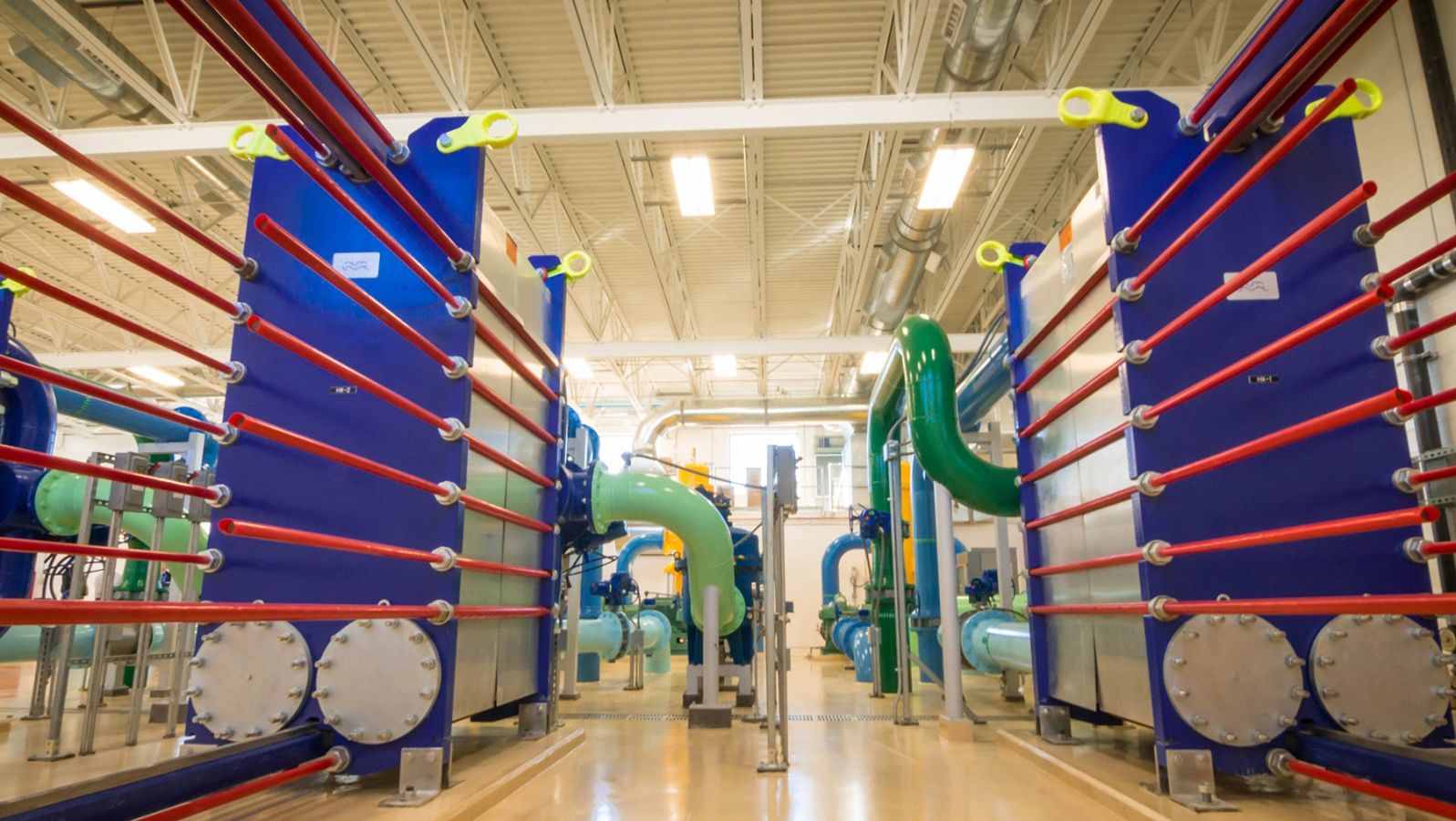
While we could not be more proud to be leveraging the energy in Lincoln's wastewater to heat and cool buildings on Nebraska Innovation Campus, we know more can be done. That's why, through ongoing studies and operations reviews, we are always seeking new ways to make Utility Services more sustainable. Below are some examples of the efforts we are making at UNL.
Ozone, Environmentally friendly Viable Solution to Biological Growth Control
Water is the critical element of Utility Services’ system of heating and cooling campus buildings. In any such system, the water must be treated in order for the equipment to function properly. Chlorinating water is one option for treatment. A faster-acting, more powerful option is ozonation. Utility Services uses ozone for a number of reasons, including the fact that ozone is clean and environmentally friendly (its only byproduct is oxygen).


We have ozone generators treating water at each utility plant. Because we can produce ozone on site, we also eliminate the need for transporting, storing and handling hazardous chemicals. Ozone is very inexpensive to produce and has an unlimited supply source, the oxygen found in air.
Thermal Energy Storage Tank
The thermal energy storage tank (TES) helps reduce operational costs by allowing us to offset when the plant chillers typically operate. It is a 50-foot tall and 100-foot wide insulated, above-ground storage tank, with a capacity of 2.8 million gallons of chilled water. The following simplified scenario helps explains how the TES works.

Summer Electricity Usage Chart
Electricity Vs. Time
During summer, a typical electricity usage chart for a warm day will pick up slowly in the morning as people arrive on campus for classes and work. Power demand continues to rise throughout the day as outside temperatures rise and more electronic devices such as computers, microwaves and research equipment are used. Powering more campus equipment and increases chilling load will raise electricity usage and the rate at which electricity is consumed.
Unlike typical residential electric utility customers, large users of electrical power such as UNL are charged not only for the amount of energy consumed but also for the rate at which it is consumed. This “rate of consumption” cost is commonly referred to as a demand charge and is priced more expensively, therefore making it a significant component of the electricity bill. On a hot day, it is easy to create a new peak in the electric consumption rate chart. These peaks, once encountered, will lock in a new rate that will result in a higher electric bill for the entire remainder of the fiscal year, as LES needs to bring online and maintain additional power plants to supply for these increased demand.
To control for these peaks, the TES comes into play. Instead of operating the chillers when outside temperatures rise, utility plant operators operate these chillers during the night and weekend when the energy usage is low (when fewer people are on campus). The pre-chilled water is then stored in the TES for use during the day. Once the TES is fully stocked with chilled water, the plant chillers are then shut off throughout the entire day. The large capacity of the TES allows for adequate campus cooling for up to eight hours, and then the cooling cycle repeats during nighttime. Operating chillers during nighttime also allows for quicker heat transfer from the cooling towers into the cool atmosphere as compared to during the day hence using less energy while achieving more cooling efficiency.
Energy Management
Utility Services is committed to reduce the carbon footprint on campus by managing energy usage wisely. One such effort is the decision to not generate electricity on campuses. By not generating electricity, less natural gas and fuel oil is burned to create steam. We also control our carbon footprint by having a self-imposed limit on the amount of electricity we use. The electricity usage limit for City Campus and East Campus is 25MWs and 9.5MWs respectively.
It also helps the university to reduce cost as municipal providers are capable of generating electricity efficiently than we can. Due to the large-scale operations of municipal and national providers, Lincoln Electric System and Western Area Power Administration can also produce electricity through renewable sources such as wind and solar farms, and hydro dams.
Renewable Energy Sources, City Campus - 2014
WAPA Power
83.2% of Total Electricity
LES Power
16.8% of Total Electricity
Total Power
Combined Electricity
Water Source Heat Pump Loop
In large buildings with many different temperature-controlled spaces - such as residence halls - it is common to have some spaces heated while other spaces cooled simultaneously throughout the year. In other words, some residents will turn up the thermostat while others will turn it down. To meet this simultaneous heating/cooling demand as sustainably as possible, UNL’s residence hall complexes such as the Knoll Suites and Village, and Harper/Schramm/Smith utilize water source heat pumps connected in a closed water loop.
The closed water loop acts as a thermal energy transfer medium, and with pumps connected to the water loop, this allows for space heating by transferring heat from parts of the building that are warmer to spaces that are colder and thus cooling the warm spaces at the same time. The water source heat pump loop helps transfer thermal energy within the building and reduce the need for external heat and cooling sources (like steam and chilled water). In effect, the heat in rooms that need to be cooler is being extracted and sent to rooms that need to be warmer.
When the water temperature in the loop is insufficient to meet the load requirement during warmer and cooler seasons, residential halls employ various ways to made up the difference in thermal energy demand. For example, the Harper/Schramm/Smith and Village complex utilizes the cooling tower system at the City Campus Utility Plant. During warmer weather, a portion of water from the chiller's condenser that has undergone the cooling process at the cooling tower is diverted to these residential halls to temper their heat pump loop. During cooler weather, a portion of hot condenser water from the chillers is diverted to these residential halls' heat pump loop instead of being cooled off at the cooling towers. While these residence halls rely on a more sustainable way of heating and cooling, they can still rely on traditional means of heating and cooling, such as steam and chilled water to supplement the water source heat pump loop when needed.


Centralized Renewable Energy System (CRES)

The innovative CRES provides year-long heating and cooling to Nebraska Innovation Campus (NIC) without the use of steam boilers and water chillers. Instead, CRES sustainably warms and cools buildings by exchanging heat from treated wastewater. The system is not unlike a geothermal system, but instead of using the ground as a heat sink, it utilizes the wastewater. The BTUs, or energy content contained in the effluent, would otherwise be wasted as it is dumped into Salt Creek. Water source heat pumps are then designed and installed into the HVAC systems in the Campus buildings to work with the campus thermal loop.